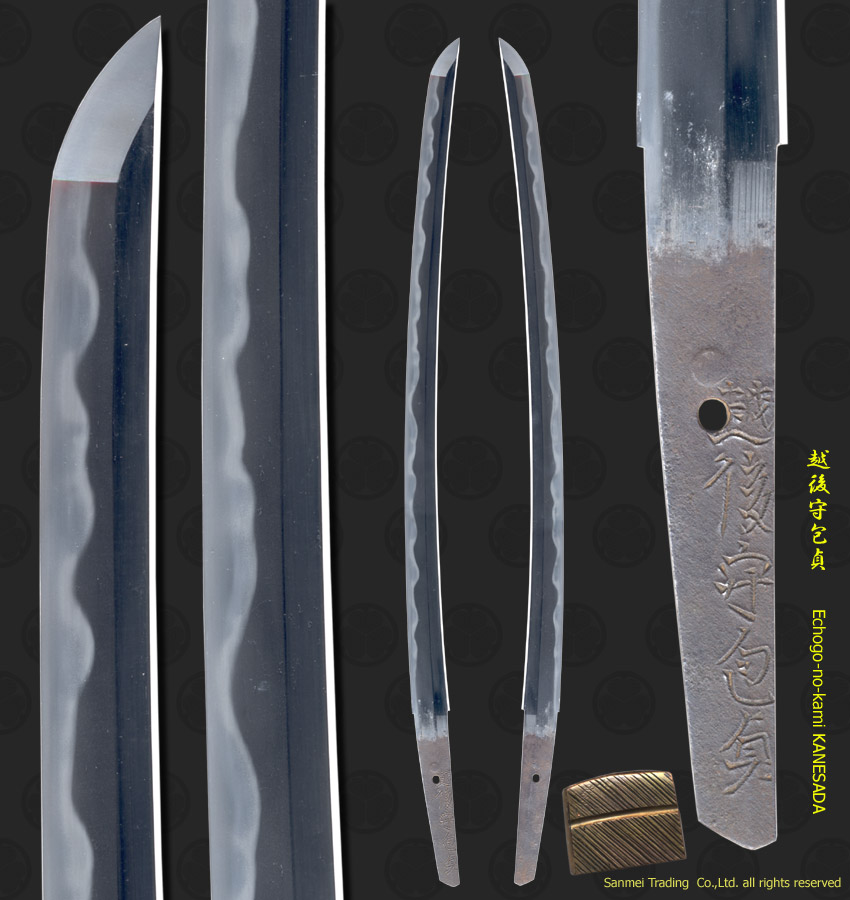NBTHK(HOZON)
Length of cutting edge56.9cm Curvature1.5cm Thickness of base6.3mm Width of base31.5mm Width of Yokote21.5mm
Kitae(forging pattern): Kitae is combination of Ko-itame(fine wood grain) and Itame-hada (large wood grain) marks. Hiraji is covered in with uniform and precise ji-nie (hard metal granules). Fine chikei nie lines works over the surface.
Hamon(tempering pattern): Hamon starts with straight tempering outline that is called Osaka-Yakidashi and large gunome, 3 - 4 gunomes groups together that creates slanted mountain shape, arrow tail shape, the entire tempering outline generates Toran-ha. Rich in nie and gunome feet works toward cutting edge. Delicate nie-lines(sunagashi) works in the interior of temper.
Nakago(tang): nakago is ubu(unaltered) with O-sujikai yasurime file marks, two mekugi-ana (one is filled), Ha-agari-Iriyama heel, signed with a thick chisel on one side Echigo-no-kami KANESADA.
Boshi(tip): There are two large gunome below yokote ridge and boshi is straight temper with medium circle turn back.
Sakakura Genoshin TERUKANE, his initial name was Echigo-no-kami KANESADA, succeeded to a name of TERUKANE from the first generation. On about the eighth year of Enpo (A.D.1680), he retuned KANESADA name to a son of the first smith TERUKANE and change his smith name [Sakakura Genoshin Terukane]. He has been admired one of the best sword smiths in Osaka, especially on hamon, TORAN-HA (the crest of waves). This wakizashi is long and wide in mihaba, the entire shape is well balanced. Jigane is covered in ji-nie and extremely beautiful. Hamon is active with bright nie-nioi activity. This is one of his representative works.
Old copper Habaki collar, Shira-Saya plain wood mounting.
